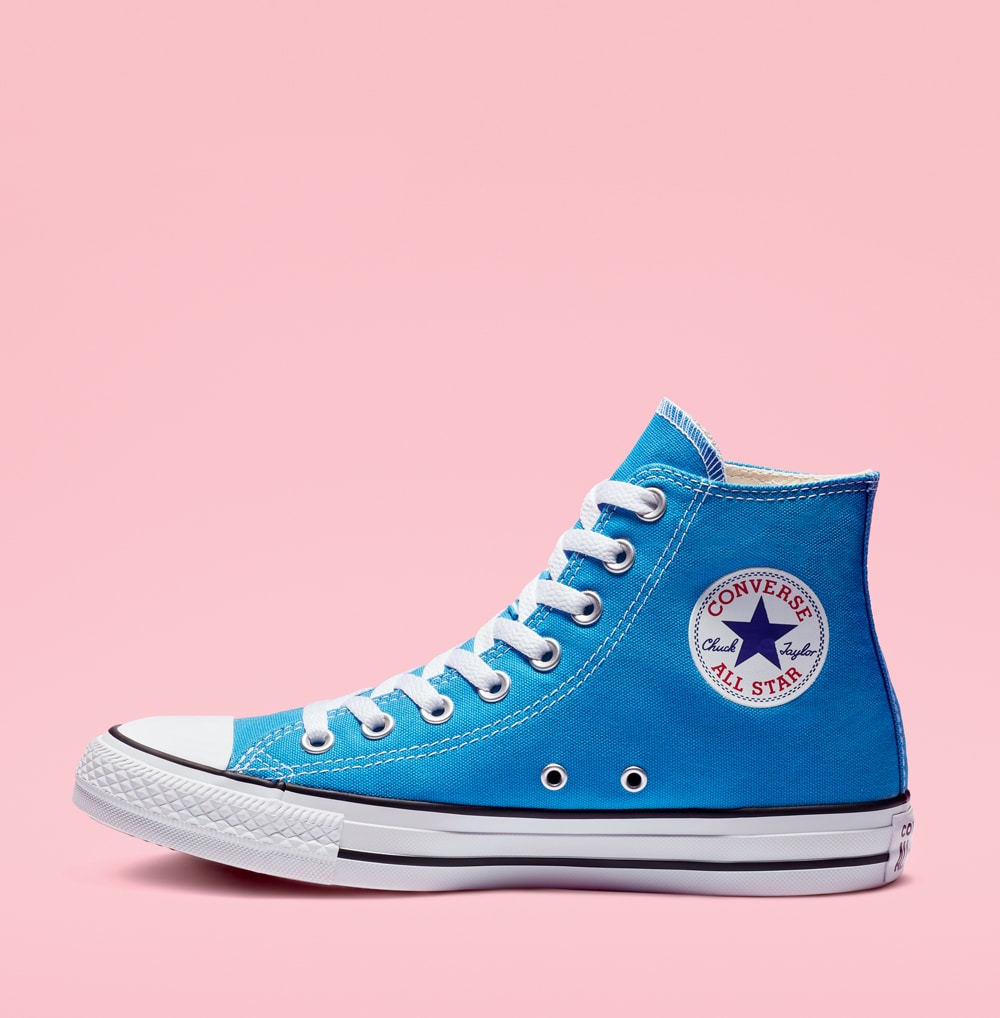Chuck Taylors Sneakers | Up Close
More than a century on, Massachusetts-born Chuck Taylors still have plenty of spring in their step.


Photo Credit : Courtesy of Converse
Their story begins in Malden in 1908, when a 47-year-old New Hampshire native named Marquis Mills Converse quit his job managing a shoe factory and launched his own business, the Converse Rubber Shoe Company. Its first athletic shoes, dubbed “Non-Skids,” debuted in 1915. The Converse All Star premiered two years later.
The “Chuck Taylor” moniker came along in the 1920s, after semipro basketball player Charles “Chuck” Taylor was hired on as a salesman. (As the legend goes, Taylor was offered the job after walking into a Converse sales office in Chicago to complain that the sneakers made his feet hurt.) Though the Indiana-born Taylor had had an undistinguished basketball career, marked by stints with the Columbus Commercials and the Dayton Non-Skids, he was a great promoter. He traveled the country, hosting basketball clinics and touting Converse shoes everywhere he went, and soon became such a well-known brand ambassador that his signature was added to the All Star ankle patch.
Taylor’s death in 1969 came on the eve of the decades-long “sneaker wars,” which saw companies like Adidas, Puma, and Nike battling for athletic-shoe dominance. As Converse’s hold on the sports market slipped, it relaunched Chucks as a casual brand, rolling out new colors and materials that made the shoe more a means of personal expression.
Despite that savvy pivot, Converse had to file for bankruptcy in 2001 and was purchased by Nike two years later. Yet the rebound that followed would make even Bill Russell proud: By 2015, the year the company moved into new headquarters in Boston (and released the Chuck Taylor II), Converse was once again a $2 billion brand.
Joe Bills
Associate Editor Joe Bills is Yankee’s fact-checker, query reader and the writer of several recurring departments. When he is not at Yankee, he is the co-owner of Escape Hatch Books in Jaffrey, NH.
More by Joe Bills

